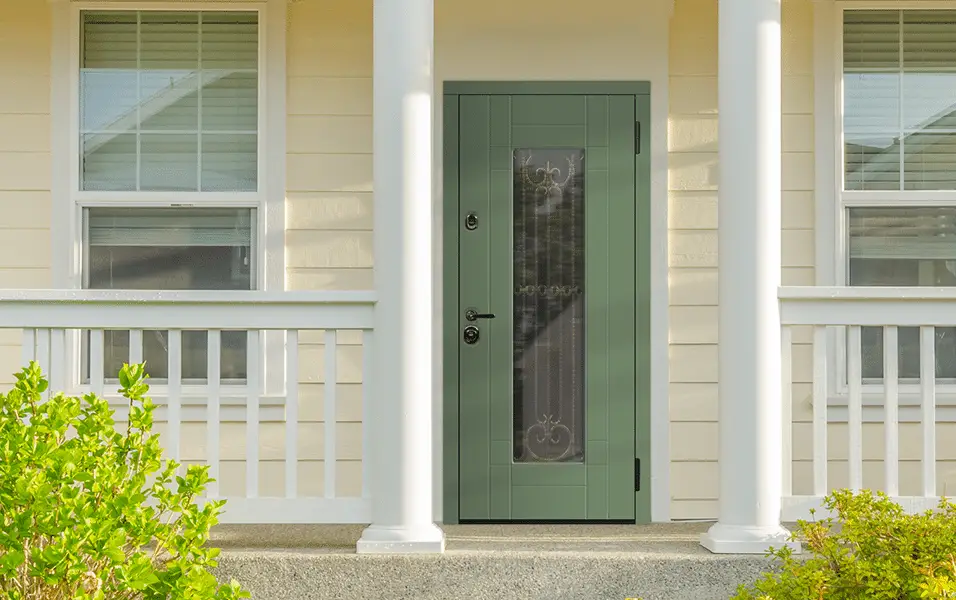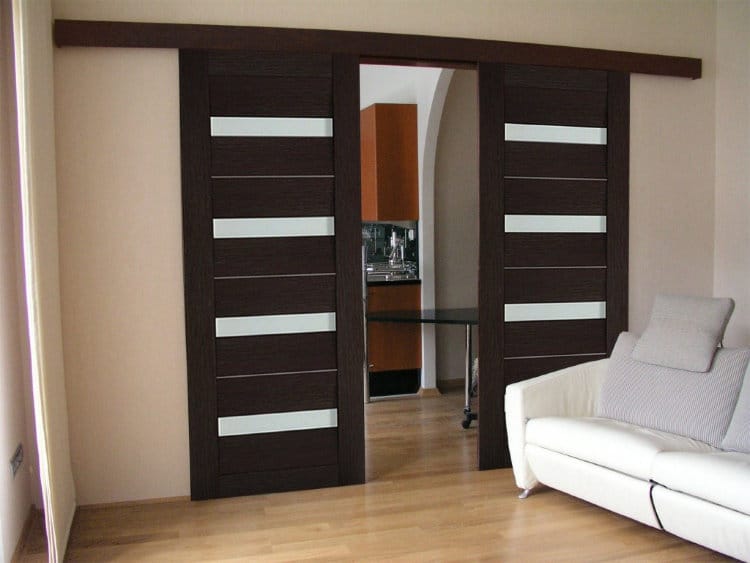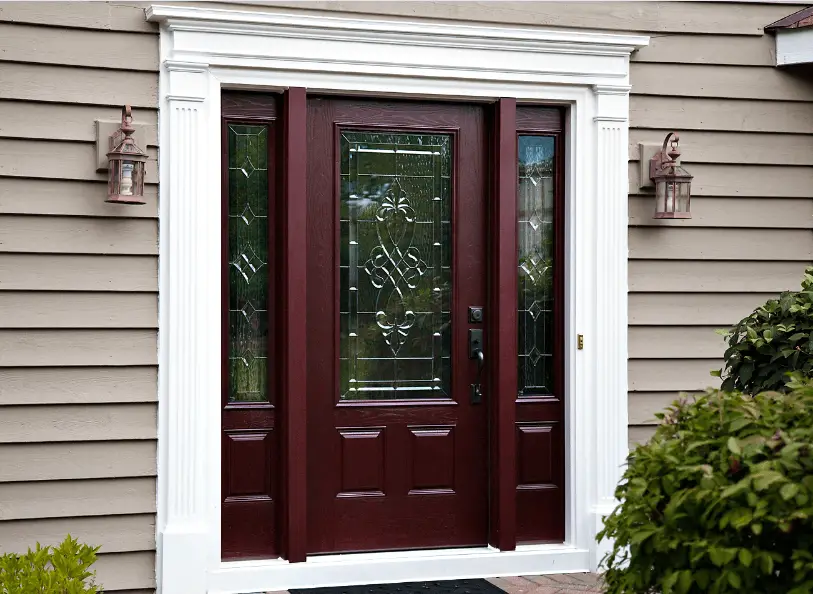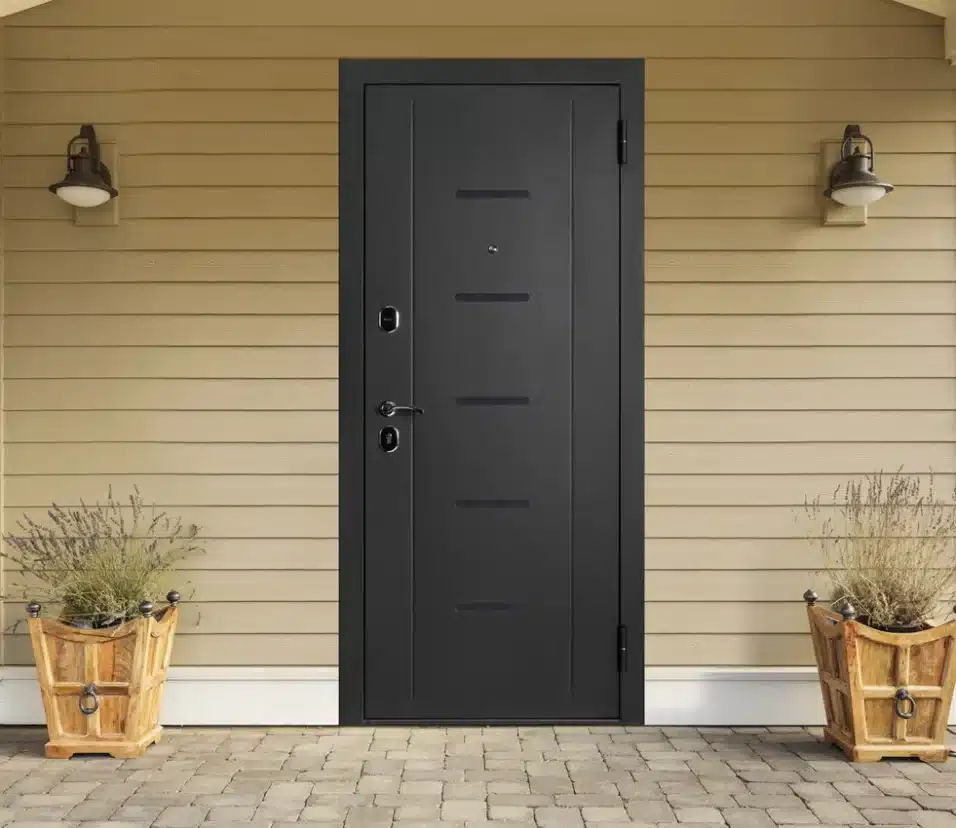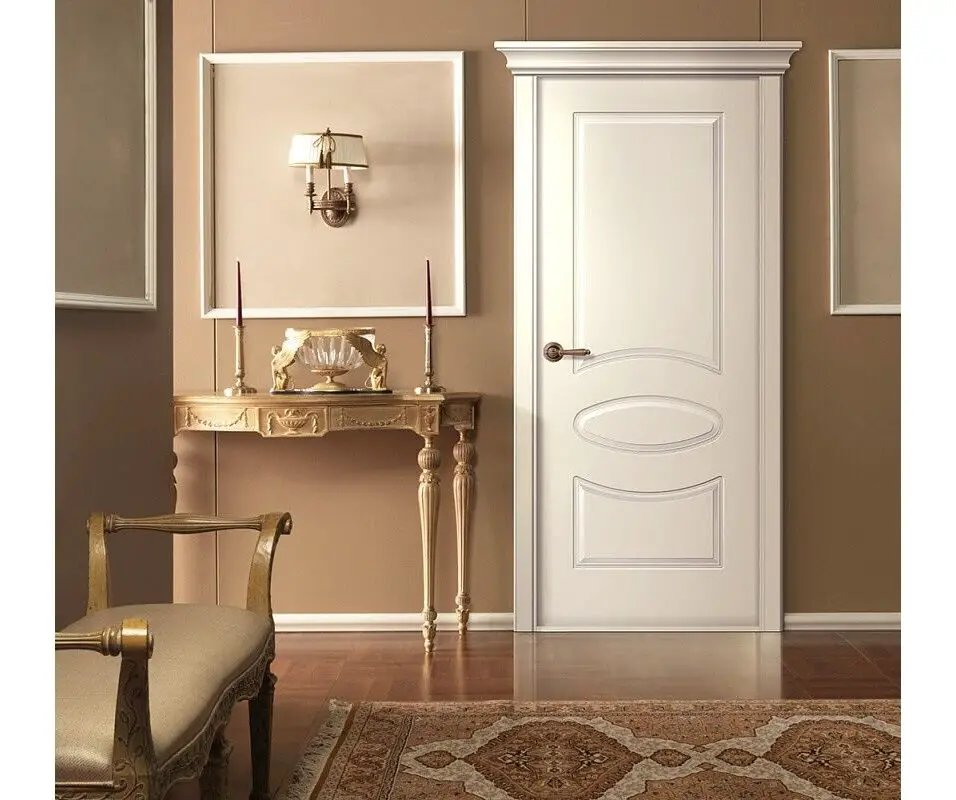How To Build A Solid Wood Exterior Door
Introduction
How To Build A Solid Wood Exterior Door: Crafting a durable and aesthetically pleasing exterior door is an art that combines functionality and craftsmanship. In this comprehensive guide, you will discover the intricate steps required to construct a solid wood exterior door that not only enhances your home’s curb appeal but also offers robust protection against the elements. Whether you’re a seasoned woodworking enthusiast or a novice looking to embark on a rewarding DIY project, this guide will equip you with the knowledge and skills necessary to create a door that exudes both elegance and strength.
From choosing the correct wood to perfecting joinery techniques for long-term stability, each step of door-building is carefully taught. We will discuss how to use and maintain the necessary tools and supplies.
Embark on this journey of craftsmanship and utility as we guide you through the creation of a solid wood exterior door that not only stands as a testament to your skills but also safeguards your home with timeless charm.

How thick should a solid wood exterior door be?
1-3/4″ thick
Interior doors are typically 1-3/8″ thick and their purpose is to divide interior rooms. The thickness of a solid wood exterior door is an important factor for both aesthetics and durability. This thickness provides the necessary strength and insulation properties required for an exterior door.
The thickness of the door can also depend on the style and design you prefer. Some traditional designs may call for thicker doors, while modern styles might use slightly thinner ones. However, it’s crucial to follow local building codes and regulations which may specify a minimum thickness for exterior doors to ensure security and energy efficiency.
Can a solid wood door be used for exterior?
Solid Wood, Solid Core, and Hollow Core Doors Compared However, there are some important considerations to keep in mind:
- Weather Resistance: Solid wood doors can be susceptible to warping, cracking, or rotting if they are exposed to extreme weather conditions without proper protection. It’s essential to use high-quality, weather-resistant wood species, apply a suitable finish, and maintain the door regularly.
- Insulation: Solid wood doors can provide good insulation, but their insulating properties might not be as efficient as insulated steel or fiberglass doors. You can improve insulation by using thicker doors or adding weatherstripping.
- Maintenance: Exterior solid wood doors require regular maintenance, including refinishing or resealing every few years to protect against moisture and UV damage.
How are wooden exterior doors made?
The door slab can be constructed of wood, fiberglass, or steel. Both fiberglass and steel doors consist of two skins stamped with a design and are then filled with an insulating material. Wood doors use stile and rail construction by joining multiple components to create an overall design.
Here is a simplified overview of the process:
- Material Selection: High-quality wood species such as oak, mahogany, or fir are chosen for their durability and aesthetics.
- Cutting and Shaping: The selected wood is cut and shaped into the desired door size and style. This can involve cutting the wood into stiles (vertical pieces) and rails (horizontal pieces) and joining them together with mortise and tenon joints.
- Paneling: Some doors feature raised or recessed panels.
- Assembly: The stiles, rails, and panels are assembled, glued, and clamped together. This forms the basic structure of the door.
- Finishing: The door is sanded to a smooth surface, and a finish is applied. This finish can be paint, stain, varnish, or another protective coating. It enhances the door’s appearance and provides protection against the elements.
- Hardware Installation: Hinges, locks, handles, and other hardware are installed according to the door’s design and function.
- Quality Control: The finished door undergoes a quality control inspection to ensure it meets standards for size, shape, and finish.
Can you build your own exterior doors?
Building an interior or exterior door can seem like a daunting task to a lot of woodworkers. But making your own door isn’t as difficult as it sounds and it provides a lot of benefits. With the right tools and techniques, you can create the design that best matches your tastes, decor, and style of home.
Building your own exterior doors is certainly possible, but it’s a project that requires a moderate to advanced level of woodworking skill, access to the necessary tools and equipment, and a good understanding of door construction principles. Here are some key considerations:
- Skill Level: If you’re an experienced woodworker or carpenter, you’re better equipped to take on the challenge of building exterior doors. It involves precise measurements, joinery techniques, and knowledge of wood properties.
- Tools and Materials: You’ll need a range of woodworking tools, including saws, chisels, routers, and clamps, as well as suitable wood and hardware for the door.
- Design and Planning: You must carefully plan the door’s design, dimensions, and style to ensure it fits your doorway and aesthetic preferences.
- Weatherproofing: Exterior doors must withstand the elements. Proper weatherproofing is crucial, including sealing, finishing, and installing weatherstripping.
- Safety and Regulations: Be aware of local building codes and regulations. Your DIY door should meet safety and structural requirements.
- Time and Patience: Building a door from scratch is time-consuming, and you’ll need patience to achieve a quality result.
- Cost: Depending on the quality of materials used, DIY doors can be cost-effective, but they can also become expensive if you choose high-end woods or hardware.
- Consider your abilities, the complexity of the project, and whether it aligns with your goals and budget before embarking on such a venture.
What is the best wood for exterior doors?
Mahogany. Mahogany is a popular option for many homeowners due to the interesting patterns that the wood’s reddish-brown colour and eye-catching graining create. Compared to its other competitors, such as oak, mahogany is more sturdy, durable, and strong.
The choice of wood for an exterior door is crucial because it must withstand various weather conditions while maintaining its beauty and structural integrity.
- Mahogany: Mahogany is prized for its natural beauty and excellent durability. It has a rich, reddish-brown color and is naturally resistant to decay and insects.
- Oak: Oak is known for its strength and durability. It can withstand harsh weather conditions but may require regular maintenance to prevent moisture-related issues.
- Fir: Douglas fir is a popular choice for exterior doors due to its affordability and natural resistance to decay.
- Cedar: Cedar is naturally resistant to rot and insects, making it an excellent choice for exterior doors. It has a distinctive aroma and a light, reddish-brown color.
- Teak: Teak is exceptionally durable and naturally resistant to water, making it an ideal choice for exterior doors. However, it is often more expensive than other options.
The best wood for an exterior door depends on your budget, aesthetic preferences, and local climate. Regardless of the wood species, proper finishing and maintenance are crucial to ensure the door’s longevity.
Is thicker door better?
Thicker, heavyweight doors offer better protection against damage and impact while making you as an individual feel safe and secure. There’s something quite satisfying about hearing the click as you shut a sturdy door. Thicker doors feel better to open and close and symbolize longevity.
- Strength and Durability: Thicker doors tend to be stronger and more durable. They can better withstand physical impacts and are less prone to warping or bowing over time.
- Insulation: Thicker doors provide better insulation against temperature changes and noise. This can improve energy efficiency and create a quieter interior environment.
- Security: Thick doors are typically more secure, as they are harder to break through compared to thinner doors.
- Aesthetics: Thicker doors can have a more substantial, high-quality appearance that can enhance the overall curb appeal of a home.
However, the optimal thickness for an exterior door can vary depending on factors like local climate and personal preference. It’s essential to ensure that the door frame and hardware are compatible with the chosen door thickness.
How long do solid wood doors last?
Solid wood:
A well-taken care of old-growth wooden entry door can last 80- 100 years. Due to their stability, another popular choice for an entry door is solid wood. Even modern hardwood doors thickly built can last 30 years or more.
However, with proper care, solid wood doors can last for several decades, and in some cases, even over a century.
- Wood Quality: The type of wood used plays a significant role in durability. Hardwoods like mahogany and oak tend to last longer than softwoods.
- Maintenance: Regular maintenance is essential to prolong the life of a solid wood door. This includes resealing or refinishing the door’s surface every few years to protect against moisture and UV damage.
- Exposure: Doors that are well-protected by porches or overhangs will typically last longer than doors exposed directly to the elements.
- Climate: Harsh climates with extreme temperature fluctuations, high humidity, or heavy rainfall can have a more significant impact on the lifespan of a solid wood door.
- Quality of Construction: A well-constructed door with proper joinery and craftsmanship is likely to last longer.
Generally, you can expect a solid wood door to last anywhere from 20 to 100 years or more, depending on these factors. Regular inspections and maintenance can help identify and address issues early, extending the door’s lifespan.
Are solid wood doors expensive?
How Much Do Wooden Front Doors Cost? A stock slab door at a home center starts at $150, a prehung around $400. Custom prehung doors can run more than three times that, starting at about $1,500.
Solid wood doors are typically more expensive than doors made from other materials such as steel or fiberglass. The cost of a solid wood door can vary widely based on several factors:
- Wood Species: The type of wood used significantly affects the price. Exotic or rare woods like mahogany or teak tend to be more expensive than more common woods like fir or pine.
- Quality: High-quality solid wood doors with intricate designs and craftsmanship will be more expensive than basic, mass-produced models.
- Size and Style: Larger or custom-designed doors often come with a higher price tag.
- Finish and Hardware: The cost can also be influenced by the finish applied to the door and the type of hardware used.
- Local Market: Prices can vary by region and local market conditions.
While solid wood doors may have a higher upfront cost, many homeowners consider them a worthwhile investment due to their durability, aesthetic appeal, and the potential to increase the value of a home.
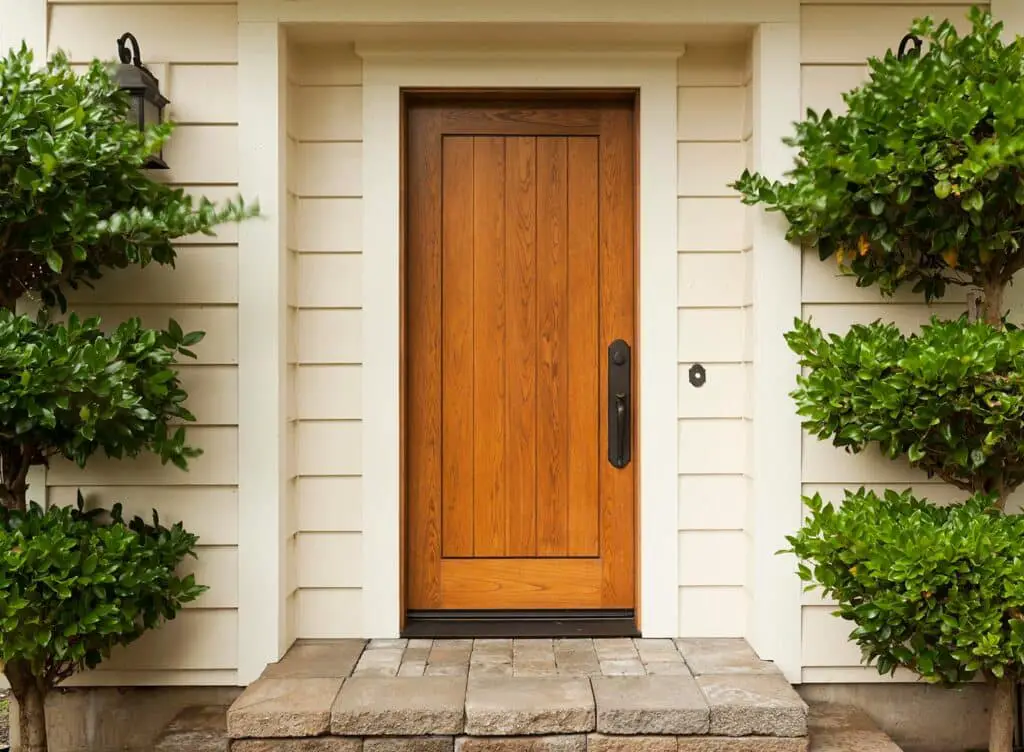
Conclusion
Crafting a solid wood exterior door is a rewarding endeavor that adds both beauty and functionality to your home. This detailed article has shown you how to build a weatherproof, attractive doorway.Remember that attention to detail, proper tools, and patience are key as you bring your vision to life.
As you embark on your woodworking journey, the skills you’ve acquired here will not only enable you to build a solid exterior wood door but also open doors to countless other creative woodworking projects. Whether you’re a seasoned craftsman or a novice woodworker, the satisfaction of crafting a functional work of art with your own hands is unparalleled. Now, armed with the knowledge from this guide, you’re ready to embark on the fulfilling journey of building your very own solid wood exterior door.




